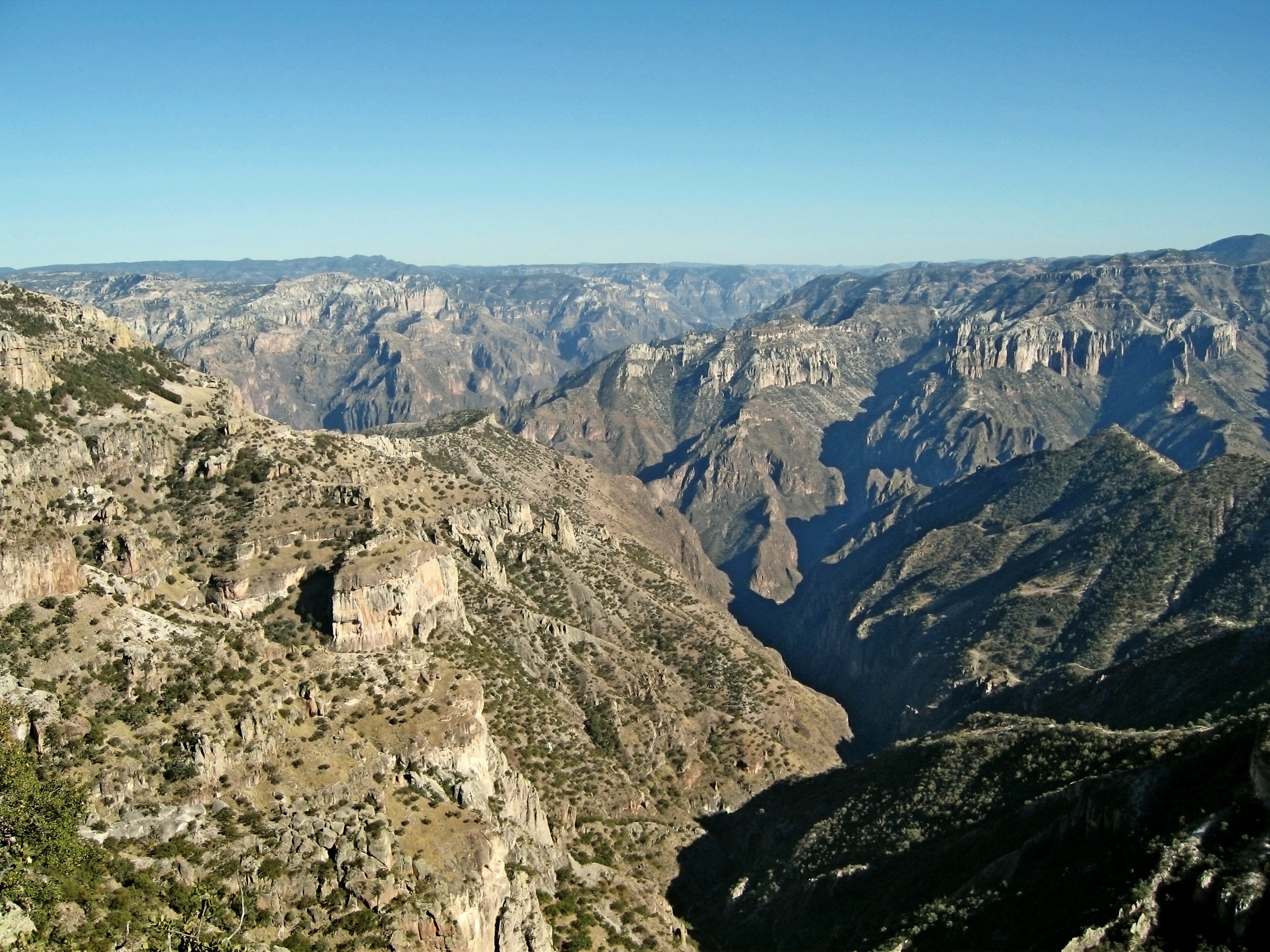|
Terrapene Nelsoni
The spotted box turtle (''Terrapene nelsoni'') is a species of turtle in the family Emydidae. The species is endemic to the Sierra Madre Occidental in Mexico. Etymology The specific name, ''nelsoni'', is in honor of American biologist Edward William Nelson. Subspecies Two subspecies are recognized as being valid, including the nominotypical subspecies In biological classification, subspecies is a rank below species, used for populations that live in different areas and vary in size, shape, or other physical characteristics (morphology), but that can successfully interbreed. Not all species ... (listed in alphabetical order by subspecific name).. www.reptile-database.org. * Northern spotted box turtle (''Terrapene nelsoni klauberi'') * Southern spotted box turtle (''Terrapene nelsoni nelsoni'') References Sources *Tortoise & Freshwater Turtle Specialist Group (1996).''Terrapene nelsoni'' 2006 IUCN Red List of Threatened Species.Retrieved 29 July 2007. Further readin ... [...More Info...] [...Related Items...] OR: [Wikipedia] [Google] [Baidu] |
Leonhard Stejneger
Leonhard Hess Stejneger (30 October 1851 – 28 February 1943) was a Norwegian-born American ornithologist, herpetologist and zoologist. Stejneger specialized in vertebrate natural history studies. He gained his greatest reputation with reptiles and amphibians. Wetmore, Alexander (1945). "Leonhard Hess Stejneger (1851-1943)". ''Biographical Memoir. Nat. Acad. Sci.'' 24: 145-195PDF/ref> Early life and family Stejneger was born in Bergen, Norway. His father was Peter Stamer Steineger, a merchant and auditor; his mother was Ingeborg Catharine (née Hess). Leonhard was the eldest of seven children. His sister Agnes Steineger was a Norwegian artist. Until 1880, the Steineger family had been one of the wealthy families in Bergen; at that time business reverses led to the father declaring bankruptcy. Stejneger attended the Smith Theological School in Bergen from 1859 to 1860, and Bergen Latin School until 1869. His interests in zoology developed early. By age sixteen he had a print ... [...More Info...] [...Related Items...] OR: [Wikipedia] [Google] [Baidu] |
Specific Name (zoology)
In zoological nomenclature, the specific name (also specific epithet or species epithet) is the second part (the second name) within the scientific name of a species (a binomen). The first part of the name of a species is the name of the genus or the generic name. The rules and regulations governing the giving of a new species name are explained in the article species description. For example, the scientific name for humans is ''Homo sapiens'', which is the species name, consisting of two names: ''Homo'' is the " generic name" (the name of the genus) and ''sapiens'' is the "specific name". Historically, ''specific name'' referred to the combination of what are now called the generic and specific names. Carl Linnaeus, who formalized binomial nomenclature, made explicit distinctions between specific, generic, and trivial names. The generic name was that of the genus, the first in the binomial, the trivial name was the second name in the binomial, and the specific the proper term for ... [...More Info...] [...Related Items...] OR: [Wikipedia] [Google] [Baidu] |
Reptiles Described In 1925
Reptiles, as most commonly defined are the animals in the class Reptilia ( ), a paraphyletic grouping comprising all sauropsids except birds. Living reptiles comprise turtles, crocodilians, squamates ( lizards and snakes) and rhynchocephalians (tuatara). As of March 2022, the Reptile Database includes about 11,700 species. In the traditional Linnaean classification system, birds are considered a separate class to reptiles. However, crocodilians are more closely related to birds than they are to other living reptiles, and so modern cladistic classification systems include birds within Reptilia, redefining the term as a clade. Other cladistic definitions abandon the term reptile altogether in favor of the clade Sauropsida, which refers to all amniotes more closely related to modern reptiles than to mammals. The study of the traditional reptile orders, historically combined with that of modern amphibians, is called herpetology. The earliest known proto-reptiles originated ... [...More Info...] [...Related Items...] OR: [Wikipedia] [Google] [Baidu] |
Reptiles Of Mexico
Reptiles, as most commonly defined are the animals in the class Reptilia ( ), a paraphyletic grouping comprising all sauropsids except birds. Living reptiles comprise turtles, crocodilians, squamates (lizards and snakes) and rhynchocephalians (tuatara). As of March 2022, the Reptile Database includes about 11,700 species. In the traditional Linnaean classification system, birds are considered a separate class to reptiles. However, crocodilians are more closely related to birds than they are to other living reptiles, and so modern cladistic classification systems include birds within Reptilia, redefining the term as a clade. Other cladistic definitions abandon the term reptile altogether in favor of the clade Sauropsida, which refers to all amniotes more closely related to modern reptiles than to mammals. The study of the traditional reptile orders, historically combined with that of modern amphibians, is called herpetology. The earliest known proto-reptiles originated around 31 ... [...More Info...] [...Related Items...] OR: [Wikipedia] [Google] [Baidu] |
Southern Spotted Box Turtle
The southern spotted box turtle (''Terrapene nelsoni nelsoni'') is a species of turtle in the family Emydidae. It is endemic to Sierra Madre Occidental in Mexico Mexico (Spanish: México), officially the United Mexican States, is a country in the southern portion of North America. It is bordered to the north by the United States; to the south and west by the Pacific Ocean; to the southeast by Guatema .... References Sources Terrapene nelsoni nelsoni Reptiles of Mexico Terrapene {{turtle-stub ... [...More Info...] [...Related Items...] OR: [Wikipedia] [Google] [Baidu] |
Northern Spotted Box Turtle
The northern spotted box turtle (''Terrapene nelsoni klauberi'' ), also commonly known as Klauber's box turtle and Klauber's spotted box turtle, is a species of turtle in the family Emydidae. Geographic range ''T. n. klauberi'' is endemic to the Sierra Madre Occidental in Mexico. Etymology The subspecific name, ''klauberi'', is in honor of American herpetologist Laurence Monroe Klauber Laurence Monroe Klauber (December 21, 1883 in San Diego, California – May 8, 1968), was an American herpetology, herpetologist and the foremost authority on rattlesnakes. He was the first curator of reptiles and amphibians at the San Diego Natural ....Beolens, Bo; Watkins, Michael; Grayson, Michael (2011). ''The Eponym Dictionary of Reptiles''. Baltimore: Johns Hopkins University Press. xiii + 296 pp. . (''Terrapene nelsoni klauberi'', p. 143). References Further reading * Bogert CM (1943). "A New Box Turtle from Southeastern Sonora, Mexico". ''American Museum Novitates'' (1226): 1–7. ('' ... [...More Info...] [...Related Items...] OR: [Wikipedia] [Google] [Baidu] |
Nominotypical Subspecies
In biological classification, subspecies is a rank below species, used for populations that live in different areas and vary in size, shape, or other physical characteristics (morphology), but that can successfully interbreed. Not all species have subspecies, but for those that do there must be at least two. Subspecies is abbreviated subsp. or ssp. and the singular and plural forms are the same ("the subspecies is" or "the subspecies are"). In zoology, under the International Code of Zoological Nomenclature, the subspecies is the only taxonomic rank below that of species that can receive a name. In botany and mycology, under the International Code of Nomenclature for algae, fungi, and plants, other infraspecific ranks, such as variety, may be named. In bacteriology and virology, under standard bacterial nomenclature and virus nomenclature, there are recommendations but not strict requirements for recognizing other important infraspecific ranks. A taxonomist decides whether ... [...More Info...] [...Related Items...] OR: [Wikipedia] [Google] [Baidu] |
Subspecies
In biological classification, subspecies is a rank below species, used for populations that live in different areas and vary in size, shape, or other physical characteristics (morphology), but that can successfully interbreed. Not all species have subspecies, but for those that do there must be at least two. Subspecies is abbreviated subsp. or ssp. and the singular and plural forms are the same ("the subspecies is" or "the subspecies are"). In zoology, under the International Code of Zoological Nomenclature, the subspecies is the only taxonomic rank below that of species that can receive a name. In botany and mycology, under the International Code of Nomenclature for algae, fungi, and plants, other infraspecific ranks, such as variety, may be named. In bacteriology and virology, under standard bacterial nomenclature and virus nomenclature, there are recommendations but not strict requirements for recognizing other important infraspecific ranks. A taxonomist decides whether ... [...More Info...] [...Related Items...] OR: [Wikipedia] [Google] [Baidu] |
Edward William Nelson
Edward William Nelson (May 8, 1855 – May 19, 1934) was an American naturalist and ethnologist. A collector of specimens and field naturalist of repute, he became a member of several expeditions to survey the fauna and flora. He was part of a team with Clinton Hart Merriam that took part in the Death Valley Expedition. He also explored the Yosemite Valley. A number of vertebrate species are named after him. Biography Nelson was born in Manchester, New Hampshire, on May 8, 1855, the first son of William and Martha () Nelson. Nelson and his brother then lived with his maternal grandparents in the Adirondacks when his father joined the Union Army and mother went to Baltimore as a nurse. Here he fell in love with the wilderness. Nelson moved to Chicago after his father was killed in the Civil War and his mother established a dressmaking business. In 1871, his large insect collection was lost in the Chicago Fire and the family was left homeless. This was the time that h ... [...More Info...] [...Related Items...] OR: [Wikipedia] [Google] [Baidu] |
Americans
Americans are the Citizenship of the United States, citizens and United States nationality law, nationals of the United States, United States of America.; ; Although direct citizens and nationals make up the majority of Americans, many Multiple citizenship, dual citizens, expatriates, and green card, permanent residents could also legally claim American nationality. The United States is home to race and ethnicity in the United States, people of many racial and ethnic origins; consequently, culture of the United States, American culture and Law of the United States, law do not equate nationality with Race (human categorization), race or Ethnic group, ethnicity, but with citizenship and an Oath of Allegiance (United States), oath of permanent allegiance. Overview The majority of Americans or their ancestors Immigration to the United States, immigrated to the United States or are descended from people who were Trans Atlantic Slave Trade, brought as Slavery in the United States ... [...More Info...] [...Related Items...] OR: [Wikipedia] [Google] [Baidu] |
Sierra Madre Occidental
The Sierra Madre Occidental is a major mountain range system of the North American Cordillera, that runs northwest–southeast through northwestern and western Mexico, and along the Gulf of California. The Sierra Madre is part of the American Cordillera, a chain of mountain ranges (cordillera) that consists of an almost continuous sequence of mountain ranges that form the western 'sounds' of North America, Central America, South America and West Antarctica. Etymology The Spanish name ''sierra madre'' means "mother mountain range" in English, and ''occidental'' means "western", these thus being the "Western mother mountain range". To the east, from the Spanish ''oriental'' meaning "eastern" in English, the Sierra Madre Oriental range or "Eastern Mother Mountains" runs generally parallel to the Sierra Madre Occidental along eastern Mexico and the Gulf of Mexico. The range extends from northern Sonora, a state near the Mexico–U.S. border at Arizona, southeastwards to the Trans ... [...More Info...] [...Related Items...] OR: [Wikipedia] [Google] [Baidu] |





